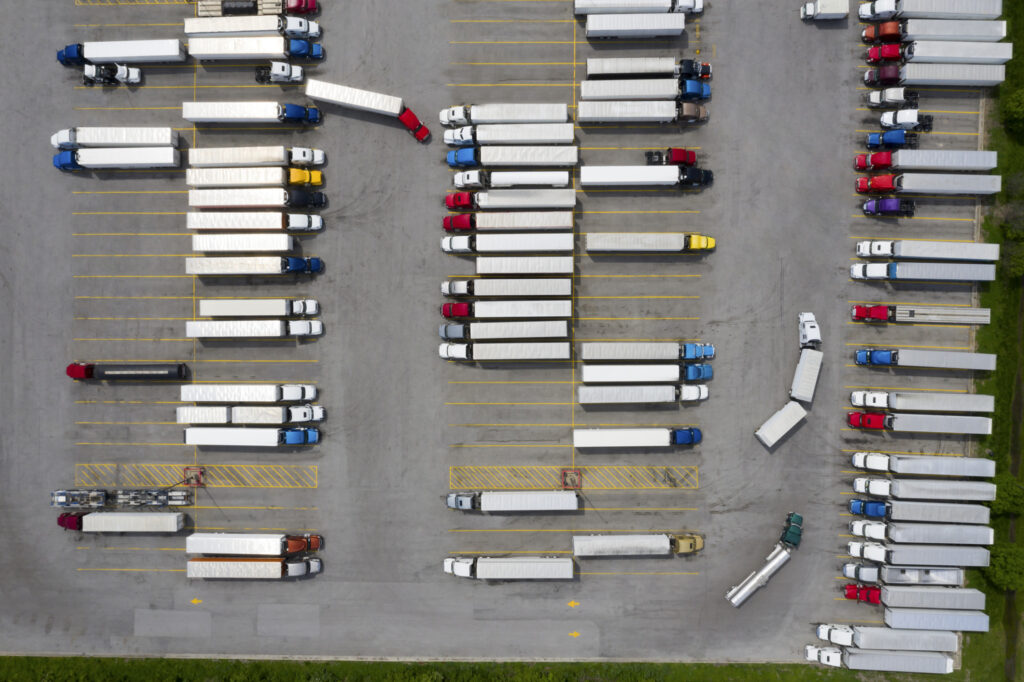U.S. supply chain review calls for truck parking, port upgrades, and more
The U.S. Department of Transportation has identified the need to invest in everything from truck parking to ports and information systems, following a broad assessment of the U.S. supply chain.
“Decades of underinvestment in our infrastructure, unprecedented consumer demand amid our strong economic recovery, and continued pressure from the pandemic have all put immense strain on our supply chains,” said Transportation Secretary Pete Buttigieg in a related press release.

The American Trucking Associations (ATA) was quick to hone in on a recommendation to support state DOTs and the private sector to expand available truck parking and address rest area safety.
“The report acknowledges what ATA and truck drivers have been saying for years: the lack of safe truck parking negatively impacts our tangled supply chain, and more importantly, it makes an already-difficult job far more challenging,” president and CEO Chris Spear said in a statement.
“The scarcity of truck parking spaces across the country decreases safety for all highway users, exacerbates the industry’s longstanding workforce challenges, contributes negatively to driver health and wellbeing, diminishes trucking productivity, and results in unnecessary greenhouse gas emissions.”
The report identified expanded truck parking as something that would have a high impact at a medium cost and complexity.
1 parking spot per 11 drivers
Spear’s comments come a week after he joined with Todd Spencer, president and CEO of the Owner-Operator Independent Drivers Association (OOIDA), in a letter calling to address the shortage of truck parking.
A 2019 Jason’s Law Report fond that 98% of truck drivers regularly experience problems finding safe parking – up from the 75% reported in 2015.
“Ultimately, the pervasive truck parking shortage can be explained with simple math – there are about 3.5 million truck drivers in the United States and approximately 313,000 truck parking spaces nationally,” they wrote. “For every 11 drivers, there is one truck parking space.”
62 recommendations
The focus on parking is just one of 62 identified policy recommendations in the U.S. Department of Transportation document, many of which look to help address bottlenecks at ports by supporting Intelligent Transportation Systems, “pop-up” intermodal yards, and communications systems to help locate products or next loads.
Potential measures to support trucking activity include investing in zero-emission fueling infrastructure, helping align operational hours at places like warehouses and intermodal transfer facilities, and urging Congress to eliminate motor carriers’ overtime exemption under the Fair Labor Standards Act.
Have your say
This is a moderated forum. Comments will no longer be published unless they are accompanied by a first and last name and a verifiable email address. (Today's Trucking will not publish or share the email address.) Profane language and content deemed to be libelous, racist, or threatening in nature will not be published under any circumstances.
In Canada we need to spend thexarbon tax money carefully with 2 cents / liter towars insurance for new drivers and smaller fleets for I surance and training of new drivers and fleets of under 50 units and transit. One cen/ L for improving parking with bathrooms, WI fi drivers m and 35 % of the cost of bunk heater up to$400/ unit air C upto $300/ unit and improved battery upto $700 per unit up to $10,000 per fleet for bus and trucking companies and wheelchair vans
Also we need to require and receiving that takes more than 1 hour to pay detention time and provide overnight parking or pay $30 per delivery to a local fund to setup offsite parking. We need to make trucking safer for drivers.